Step-by-step guide to traveling with a disability
From ETIAS.COM
From learning about a different culture to getting out of your comfort zone—there are so many reasons to explore far and wide. As our world becomes more connected by technology, travel has become more accessible to everyone, even those with disabilities.
Mobility depends on both the traveler and the companion’s mental and physical abilities and can vary significantly by country. It’s important to know your specific needs and allow plenty of time for trip preparation and planning. International travel requirements change frequently, so make sure you’re prepared with the most up to date information.
This is a general guide meant for use by travelers with disabilities whether physical, developmental, visual, aural, or neurological. Specifications beyond this guide may be required depending on the circumstance. Jump to the section you need to plan and prepare for a successful trip.
- Planning Your Trip
- How to Prepare for Your Trip
- While You’re Traveling
- When You Return
- For Caregivers and Companions
- Additional Resources
Planning Travel With a Disability
Enacted legislation allows people with disabilities equal rights to travel freely. However, regardless of disabilities, travel can come with surprises, so it’s important to have a backup plan. Consider the factors below while researching your destination to ensure a comfortable and accessible trip.
Know Your Rights
Ensure that your basic rights are met, but always prepare to be patient. Disability laws and acts vary by country and area. The goal is to eliminate discrimination and barriers so if you have a disability, you can travel equally and freely. For a complete list of country-specific disability laws, check out United Nations as a resource.
When traveling or boarding, it may take extra time if an agent or representative has not experienced disability-specific accommodations. If there is any hesitation that your rights are violated, speak with the Complaints Resolution Official (CRO).
Two examples in the U.S. are the Air Carrier Access Act (ACAA) and Americans with Disabilities Act (ADA) where any traveler with a disability and their companion have the freedom to travel equally. Examples of rights under the ACAA and ADA include:
- Service animals are allowed to accompany people with disabilities.
- Entrances, doors, ramps, and elevators must have accessible routes.
- Accessible building elements such as signs, toilets, parking spaces, and loading zones.
- Adequate time to board on all modes of public transportation.
- Aircrafts with over 60 seats must provide an accessible lavatory and onboard wheelchair.
Research the Destination
Research your route thoroughly since accessibility will vary by location and the disability. Take special considerations of the terrain you’ll be traveling to. In some countries, it will be difficult to travel with more than a backpack. Ensure vendors will accept your credit card, your bank card is compatible with local banks, or arrange to convert your cash to local currency upon arrival.


Local tour companies may specifically service persons with disabilities. If you opt for this route, read the reviews and double-check the tours are short and smooth. Before booking a tour, consider asking the following questions:
- Do you accommodate travelers with disabilities on your tours?
- Is it a private tour or will there be other travelers?
- Does the city have hills, cobblestones, or steps?
- Is the guide a licensed professional?
Find Accessible Hotels
Do not assume that because a booking site or a hotel’s website staterooms and buildings are accessible that they will have features you’re used to. Call each location you plan to stay directly and ask specific questions. Use open-ended verbiage that warrants answers beyond yes and no. Ask about:
- Step-free access: Check for access inside and outside of the building.
- Designated parking: Find out how far the parking space is from the building.
- Signage: Ask if the room and building signs include braille.
- Bathroom accessibility: Inquire about the doorway width, height of grab bars, and raised toilets.
- Proximity of services: Find out how far health, restaurant, and facilities are from the location.
- Multi-lingual: Ask if the staff is English-speaking or if anyone knows sign language.
When arriving at accommodation, double-check that the room, hotel, or house is suitable before checking in. If there is confirmation of an accessible room but the proper accommodation is not available on arrival, ask where else they will put you up for the evening.
Inform the Airline and Airport
Be sure to call not only the airline carrier but each airport at the departure and arrival destinations. Ask for necessary accommodations such as an in-flight wheelchair or oxygen, and inquire about the size of the plane and the aisles.
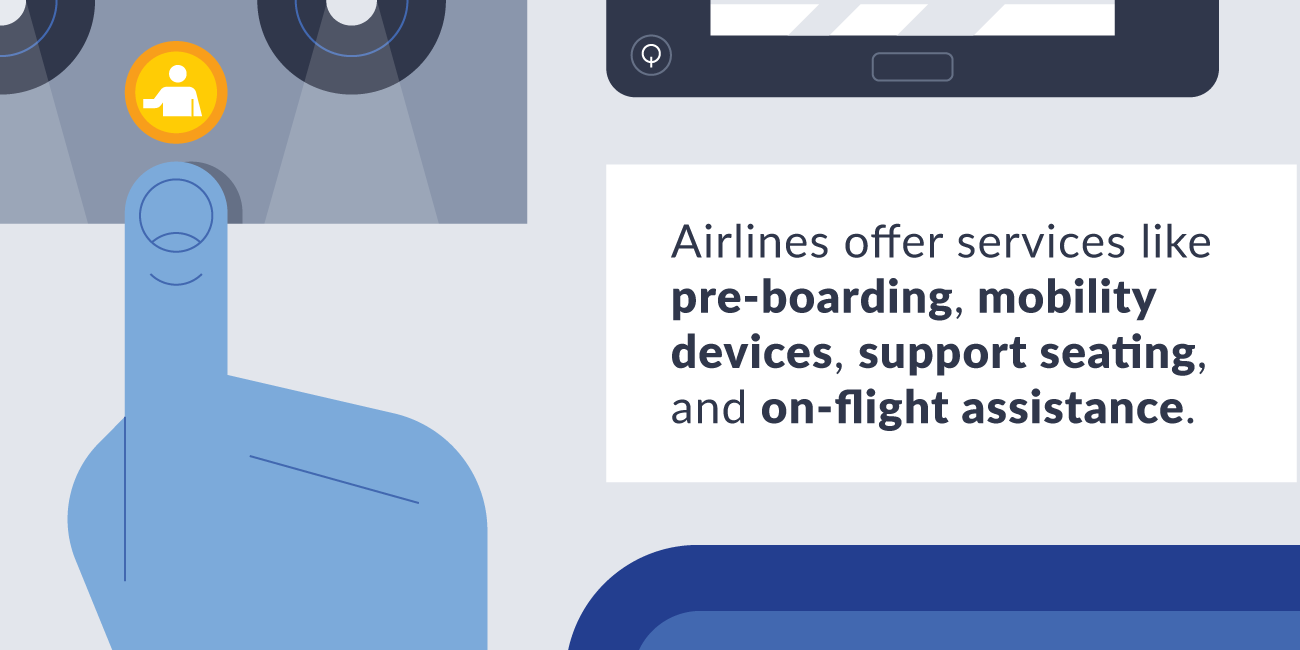

Don’t forget to review your rights before initiating the call. Larger planes are required to have more accessibility options throughout the cabin. Give each party another call 2-5 days before departure to confirm the same.
Medical Considerations
Establish that any travel insurance you obtain will cover pre-existing conditions. Note that not all medicine is legal in every country and it is your responsibility if you’re bringing medication abroad to ensure its legality.


For example, countries such as the UAE, Indonesia, Thailand, Hong Kong, Singapore, Greece, China, and Japan all have strict laws where common Western medications are considered illegal.
Preparing to Travel With a Disability
After careful planning, it’s time for the final preparations before the fun begins. Beyond the standard packing list, consider visas, medical notes, and essential phone numbers when preparing for your trip.
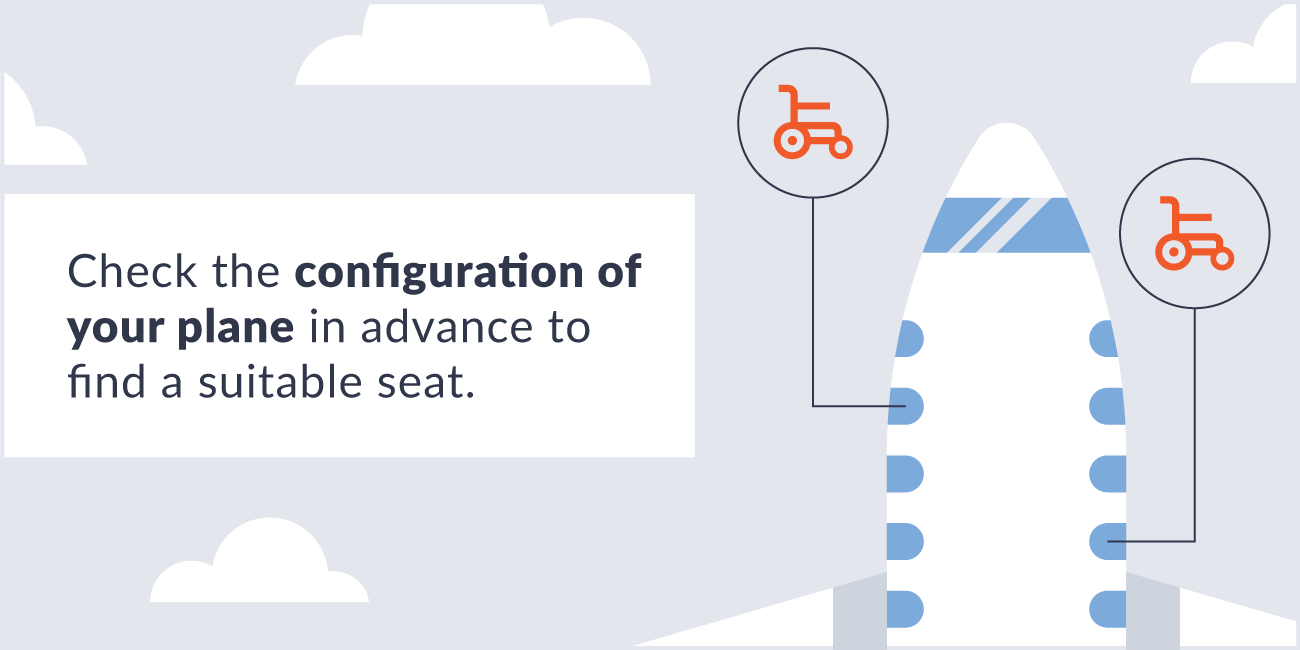

Speak With Your Doctor
Before traveling a significant distance, speak with your doctor. Request and pack enough prescription medication to cover the length of the entire trip. Inquire about the necessary vaccines for each country and confirm physician availability in the destinations. Bring a letter from the primary care physician to identify the diagnosis and medications in case of an emergency.
Apply for Visa or Travel Authorization
Research the visa process for each country and submit applications for a visa or travel authorization such as ETIAS. Each country will have a different approval processing time, so leave appropriate space between your submission and departure. Note any additional requirements for being admitted into the destination, such as separate passport photos or local currency.
Call TSA Helpline
Among the final stages of preparations, submit a TSA notification card. This notifies the Transportation Security Administration about any disabilities or medical conditions that could impact screening. TSA offers a free helpline named TSA Cares to assist with additional questions about the screening process.
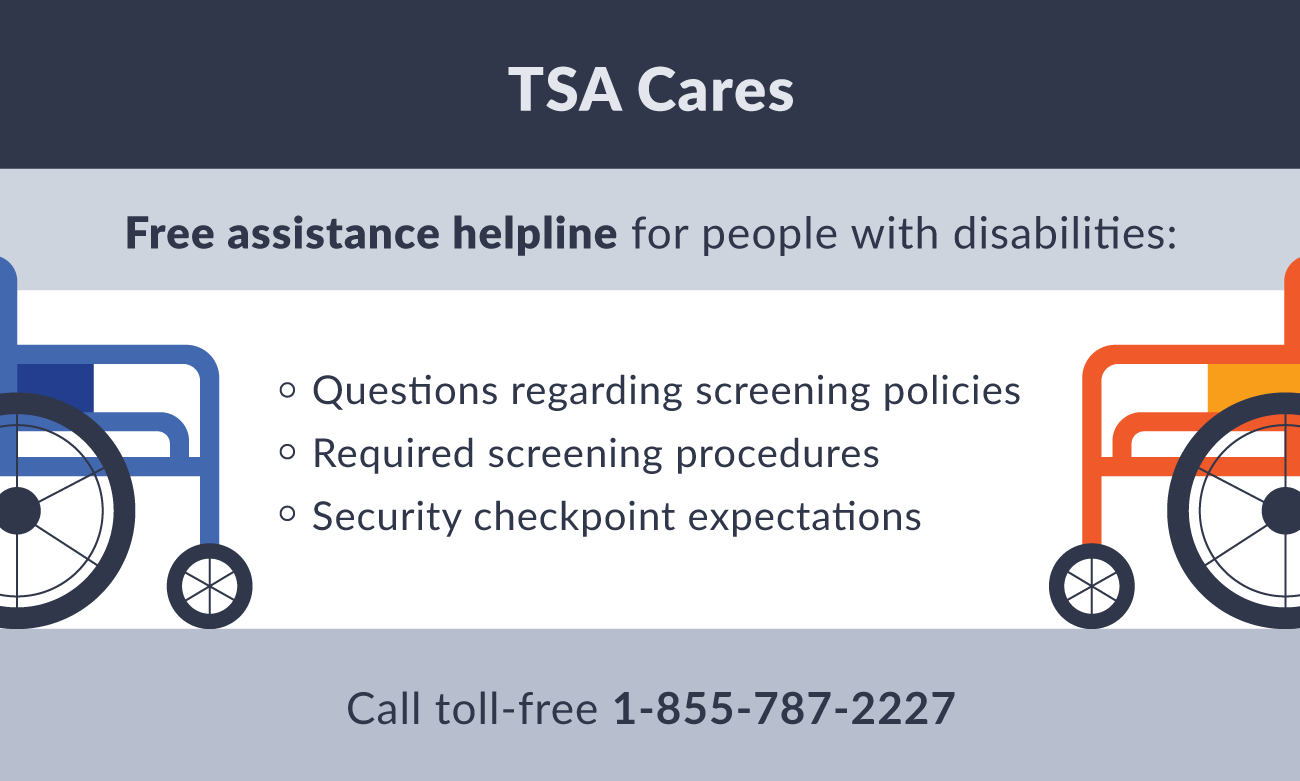

Reconfirm Your Reservations
Call the hotel, tour, and airline a few days in advance to reconfirm special accommodations. List specific questions that will endorse proper accommodations for the condition.
Ask about the accessibility of routes and detail any hills, dirt roads, sidewalk hindrances, and overall distance from key locations on the travel schedule. Finally, ensure that public transportation is available and accessible. If not, inquire about car rentals or scheduling a private chauffeur.
Accessibility While Traveling
The most difficult part of a vacation is the planning and preparations. Once complete, the trip should be moderately stress-free, sans the inevitable hiccups that come with travel. Follow these tips for a few extra know-hows while navigating through the holiday.
Manage Expectations
It’s impossible to see everything in one trip. Manage expectations about how much you and a companion will be able to see each day. Note any special limitations of the caregiver.
If there are steep hills, and that party will be trudging equipment up and down, prepare for frequent stops and ample time to rest. If there is no travel companion present, consider meeting up with other groups for people with disabilities in your destination.
Boarding the Plane
Be aware of whether or not the airplane has an on-board wheelchair. Reconfirm before boarding and ask the airline attendant whether or not they’ve secured an accessible seat.


Keep insurance cards, extra medicine, equipment, and anything else important in a carry-on in case of delay or emergency. Get the bag tagged at the gate, and adjust the armrest for a clear transfer before getting into and out of the seat. For long haul flights, inquire about lavatory access and transfers.
Manage Your Time
Allow ample time for check-in, security, and transfers. Have a backup plan in case hotels, tours, or transfers have failed to provide the proper accommodation. Accessibility can mean different things in different countries, especially non-native English speaking ones. Be open to getting around in new ways, and corroborate that there is enough time in the schedule to do so.
Tips for After Travel With a Disability
The travel market for those with disabilities continues to grow, at an average of 22% annually, according to Forbes. Although the market has a long way to go, the growth is partly due to increased accessibility regulations and training.
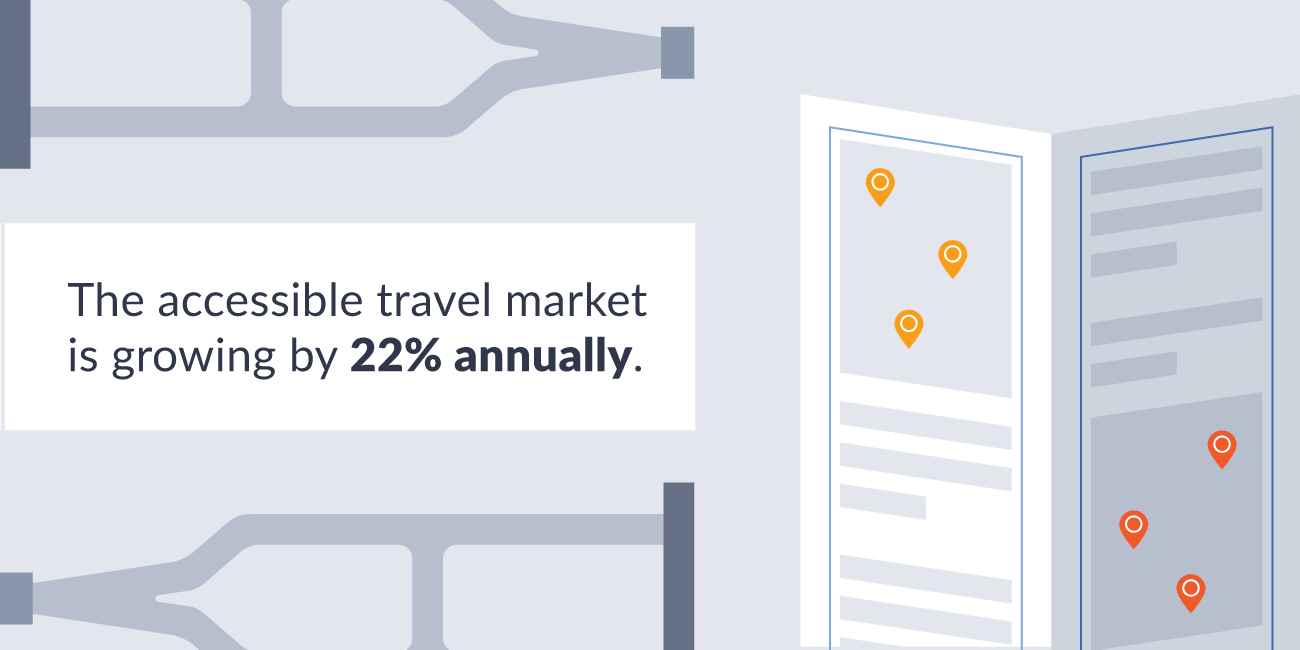

To make future travel easier, log what went well and what didn’t. Create a reference sheet for future trips to lessen the time spent in the planning and preparation stages.
Create a Travel Cheat Sheet
Create a travel cheat sheet immediately after returning home. Once the reference sheet is created, consider making a li pros and cons to streamline the process for your next trip. Sections to include in the travel cheat sheet are:
- Packing: Any essential items that were missing or overpacked.
- Airline: Level of accommodation, friendliness, and comfort of the flight.
- Language: Any language barriers and ease of translation.
- Food: Accessibility of restaurants and likes or dislikes about the dishes.
- Attractions: Accessibility and level of enjoyment at attractions.
- Transportation: Ease or difficulty level of getting around between locations.
- Accommodation: Proximity to destinations, level of accessibility, and staff friendliness.
- Companion: Ease of care and level of enjoyment at a destination.
- Budget: Spending that was over or under the planned budget.
Companions of Disabled Travelers
Traveling as a caregiver or companion can be daunting. The traveler’s success often relies on the ability to make things comfortable in a foreign place. Consider companion needs and expectations before the trip to ensure each party is able to help to the best of their abilities before departure.
Confirm Budget and Discounts
A successful trip depends on a successful pre-planned budget, especially if the caregiver is paid to accompany the traveler. Confirm if each party is paying for themselves, and who is managing the general budget. If there are hourly or hiring fees associated, get the amounts squared away in writing before the trip begins.
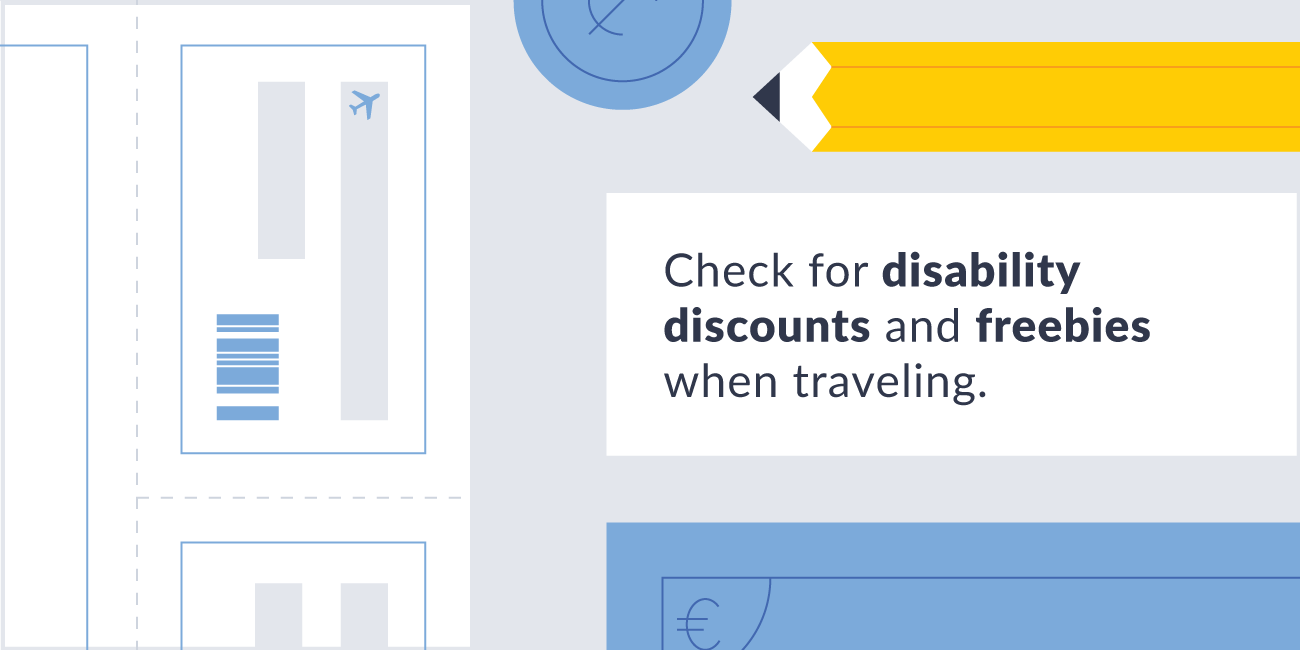

Oftentimes, people with disabilities are eligible for significant discounts. Bring a valid medical record and check if the following discounts apply in your destination:
- Recreation and amusement park discounts.
- Marked down railway tickets.
- Public transportation discounts.
- Free entry to park locations.
- Rental car discounts.
- Special accommodation and discounts on flights.
- Free admission to museums.
Agree on Accommodations
Ensure each party is on the same page with accommodation expectations. Discuss whether rooms will be shared, adjoining, or separate. Because disabilities may require a different level of care while traveling than at home, define the level of assistance required of the caregiver for the morning, day time, and bedtime.
Attractions and Activities
The routes at each destination should be planned to account for the companion’s physical and mental limitations. Consider adding a few activities to the schedule that are on the caretaker’s wish list to show appreciation.
If both the companion and the primary traveler will be spending the entire time together, that should be communicated prior to departure. If there are sections of the trip where each party will be separated, that should also be decided. Proper accommodation should be booked for each party before parting ways.
Additional Resources for Travelers With a Disability
As traveling with a disability becomes more common, more resources become available. In addition to reading blogs with specific suggestions for travelers with disabilities, review the information from the following sites for additional travel tips.
- European Network for Accessible Tourism
- U.S. Department of Transportation
- The Americans With Disabilities Act
- Society for Accessible Travel & Hospitality
- Lonely Planet’s Accessible Travel Online Resources
Disabilities shouldn’t hinder memorable life experiences. The more planning that goes into the trip, the easier traveling to a new destination will be. Research your destination, make the proper calls, and prepare accordingly.
While traveling, make a resource log of what went well and what could be improved on for the next trip. Trial and error are key. Ensure your caregiver has ample time to enjoy the vacation themselves while feeling appreciated in the process. Last but not least, enjoy yourself!
Sources: Open Doors Organization | CDC | TSA | Bureau of Transportation Statistics | United Nations
OUR SOURCE: https://etias.com/articles/travel-with-disability





